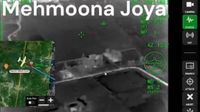Authorities have begun evacuating residents from the border villages of the Bajwat sector in Sialkot amid growing fears of a potential conflict, reported 24NewsHD TV channel Wednesday. In response to the heightened threat perception, emergency sirens have been activated across the region, accompanied by repeated announcements urging citizens to move to designated safe zones. District administration and security forces are assisting in the safe relocation of families from vulnerable areas near the International Working Boundary and Line of Control (LoC), as precautionary measures are intensified to safeguard civilian lives in the face of a possible war-like situation. Local officials have urged residents to remain calm and cooperate fully with the evacuation efforts while staying alert to further updates.
Early on the same day, Indian armed forces executed one of their most focused counter-terror offensives under Operation Sindoor, striking nine major terror camps across Pakistan and Pakistan-occupied Kashmir. Among the key targets was Sialkot, a hotbed of terror activity located just a few kilometers from the Indian border. Two camps in Sialkot were reduced to rubble in the overnight missile strikes. Colonel Sofiya Qureshi, speaking at the Operation Sindoor briefing, revealed critical details about these camps and their deep-rooted involvement in past attacks on Indian soil.
One of the camps destroyed was the Sarjal camp, located just 6 km from India’s Samba region. According to Colonel Qureshi, "In March 2025, five Indian police officers were killed in Kashmir in a gun battle with the terrorists. Those involved in the attack were trained at this spot." Another significant strike hit the Mehmoona Joya camp, situated 12 to 18 km from the international border. Described as “one of the biggest camps of Hizbul Mujahideen,” this location had long served as the operational epicenter of terrorist activity in Jammu. Colonel Qureshi added that the Pathankot Air Force base attack was “planned and initiated from this very camp.”
On the other hand, Col. Sofiya Qureshi also talked about the reason behind selecting the other strike sites. She said, "The videos show destroyed terror camps, including from Muridke where those involved in the 2008 Mumbai Terror attacks – Ajmal Kasab and David Headley – received their training." She confirmed that no military installation was targeted, and till now there were no reports of civilian casualties in Pakistan.
Among the other sites targeted was Bahawalpur, the headquarters of Jaish-e-Mohammed (JeM) and is situated around 400 km from Lahore. It houses the group's operational nerve center at the Jamia Masjid Subhan Allah. Located around 100 km from the international border, Bahawalpur is the 12th largest city of Pakistan. Among the sites targeted by India was the Jamia Masjid, said to be spread across ~18 acres and serving as JeM's hub for recruitment, fundraising, and indoctrination. The site was directly linked to the Pulwama attack on February 14, 2019, and houses senior JeM leadership including Maulana Masood Azhar, Mufti Abdul Rauf Asghar, and Maulana Ammar.
The strikes were part of a larger coordinated effort that targeted infrastructure tied to Jaish-e-Mohammed, Lashkar-e-Taiba, and Hizbul Mujahideen. The Indian military maintained that the operation was “focused, measured and non-escalatory,” aimed strictly at terror infrastructure while avoiding Pakistani military sites. This operation represents a significant shift in India's counterterrorism strategy, with Sialkot now firmly in India's sights as a key location for JeM and Hizbul Mujahideen's cross-border operations.
On May 7, 2025, an unverified video surfaced showing scenes of panic among civilians reportedly in Pakistan and Pakistan-occupied Kashmir, just a day after Indian armed forces launched Operation Sindoor. In the video, people can be seen running and looking around in confusion after loud sirens blared across an unspecified location. The footage emerged shortly after India confirmed targeted strikes on nine terror-linked sites in response to the April 22 Pahalgam terror attack that killed ten relatives of Jaish-e-Mohammed chief Masood Azhar. The timing of the video’s appearance has drawn widespread attention online, though officials have not confirmed its authenticity or location.
Meanwhile, aligning with the Ministry of Home Affairs' (MHA) directive, mock drills began across several states in India from 4 pm. This was part of the preparedness measures in light of the ongoing tensions. The Indian army's official X handle posted another video of 'Operation Sindoor' against Pakistan with specific details about Target 3- Mehmoona Joya Terrorist Camp in Pakistan's Sialkot. It provided details on how, when, and why the Mehmoona Joya terrorist camp at Pakistan's Sialkot was targeted.
In a post on X, the Indian Army stated that the camp, which was used as a control center for the revival of terrorism in Jammu and Kashmir, was destroyed at 1:11 AM on May 7, 2025. The Army described the Mehmoona Joya terrorist camp as the key training center of Hizbul Mujahideen. Earlier, the army shared specific details regarding other targets in the operation.
As the situation continues to unfold, Indian officials maintain that they will not tolerate safe havens located right over their border. The devastation during Operation Sindoor makes it abundantly clear that India is committed to dismantling the terror infrastructure that has long plagued its security landscape.
In conclusion, the events of May 7, 2025, mark a critical juncture in India-Pakistan relations, with military actions escalating amid fears of a broader conflict. The evacuation of civilians in Sialkot and the Indian military's decisive strikes reflect a tense and volatile atmosphere in the region, with both sides on high alert.


